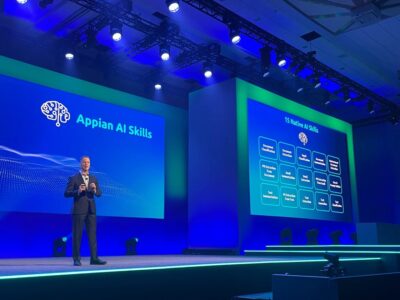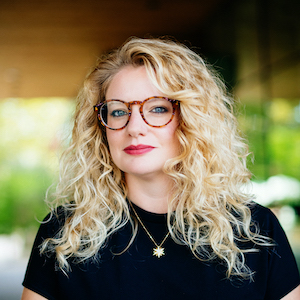WeDC, an initiative of the Washington DC Economic Partnership (WDCEP) and championed by Mayor Muriel Bowser and her inclusive innovation agenda at places like SXSW, brought its latest local event to the District last month at the WeDC Futures Forum.
Through a daylong event exploring the future of cities, technology, culture and cannabis, public and private sector decision-makers connected at the Eaton DC on Oct. 2 to listen in on how D.C. stakeholders are working together to generate solutions to the region’s most challenging issues.
In opening remarks, John Falcicchio, Bowser’s chief of staff and interim deputy mayor for planning and economic development, focused the audience on a purpose for the conversations that took place on panel discussions throughout the day.
“Mayor Bowser always challenges us to show people that we’re not your grandfather’s Washington, D.C. We’re not the stodgy government town that goes to sleep early at night. What we see now is a vibrant D.C. with creatives, technologists and restaurateurs,” he said. “When you think about today, the question that you have is “What if?”
Moderated by Karl Darin, VP and program lead for the Greater Washington Board of Trade, panelists on the opening session were up for the challenge and shared their vision for a connected DMV. Here are the key goals for how the partnership sees the future of Greater Washington as a leading digital region.
Create the operating system for the region.
“What we’re seeking to achieve with this digital environment is to establish the operating system equivalent for the region,” said Darin. Using the analogy of the operating system on your phone, Darin said the DMV should provide a secure, interoperable, inclusive and sustainable system for how you live, work and play.
“Think of connected DMV as the operating system for the region that will allow the applications and digital solutions from all different sectors to proliferate and thrive,” Darin said. “It’s very important to lead in this environment, with all of these disruptions, rather than to be led by it.”
Collaborate to achieve transformative change.
For the panelists, this goal of a regional operating system hinges on collaboration. Speaking of the experience of one of two energy providers that serve the area, Melissa Lavinson, senior VP of governmental and external affairs at Pepco Holdings, sees the experience that large infrastructure providers like Pepco have in creating distributed solutions at scale will be critical to achieve the vision of the connected DMV.
“Utilities, in general, we are a series of interconnected systems that have to work together, so we are very used to as an industry creating interoperability standards. Electricity knows no boundaries. It flows across state lines,” she said. “It all has to work together seamlessly so that the lights stay on for everybody.”
It’s through a collaborative approach and willingness to create region-level changes that will be the key to transformative change and shifts in mindset.
“We all have our goals and objectives but how can we all come together to meet them in a really efficient and seamless sort of way?” Lavinson said.
Focus on opportunities for innovations in access infrastructure.
MedStar Director of Consumer Health Initiatives Pete Celano is betting on the impact of what he calls sensorization to make innovations more distributed and accessible. With technologies like the Apple Watch, he sees the ability to move away from one-off, infrequent monitoring of health conditions to constant, consistent data collection as a way to improve patient outcomes across social and economic barriers.
“How do we wash the area with connectivity? You’d never have any hope of doing it as an individual jurisdiction,” he said. “If we came together we could light up the area, it would be a great boon for healthcare, with far better outcomes for patients, all of us, and in many other industries as well.”
Seek a comprehensive societal answer.
It’s important to acknowledge that industry alone will always seek the ideal commercial solution. Meanwhile, in the region there are 700,000 people who are digitally insecure — whether that is living in a home without Wi-Fi or internet access or without a data plan on their phone — and that there are polar opposite educational and life expectancy statistics in a 10-mile span. On these points, Capital Area Food Bank CEO Radha Muthiah honed in on how the connected DMV presents significant opportunities to correct these issues by creating innovations that meet individuals and groups where they are.
“Just saying ‘We’ve got broadband available everywhere,’ if you will, is not enough,” Muthiah said. “Are people adopting it? Are they using it? Do they need additional support to be able to engage with it?”
Mentioning her role in one of the partnership’s solutions groups, Muthiah emphasized that there are over 100,000 people that don’t have the skills they need to participate and engage in new jobs coming to the region.
“We’re not waiting for a sort of trickle-down effect for those who have been marginalized in the past, but how 5G and how the connected smart region movement will be able to support those who have been disenfranchised quickly so that it allows them to become a part of the economic activity that’s taking place in this region,” she said.
In an effort to establish standards that operate across the region, there are over 300 people representing private, public, academic, and nonprofit institutions from over 150 organizations, working in 18 solutions groups in the smart region. The solutions groups are focused on topics that include health and wellness, energy and resources, cyber data management and privacy, procurement interoperability, the built environment and urban design, and transportation infrastructure.
Proactively take on the speed of change.
Industry partners and employers want to be near the talent. They want to be in cities, and their proximity to the center matters. Explaining the input that Virginia Tech received from two companies, Steve McKnight, VP for the Blacksburg-based university’s new Office of Strategic Alliances, said, “if you’re not located near us, you’re irrelevant.” The university has made strategic investments to have a footprint in the connected DMV, with urgency.
“We won’t have the time to react,” said McKnight. “The operating system that allows us to put all these smart connected apps together is something I think we need to do as a community. There’s some real opportunity, but there’s challenges in terms of privacy, equity, inclusivity, that if we don’t get right as a region, all the benefits that we think are going to happen may not be realized, and will have unintended consequences.”
The panelists agreed that urgency at the macro level and the awareness of and proactive response to the speed of change is critical, something that Virginia Tech’s forthcoming innovation campus intends to address. The campus is being built across the river attempts to put the human, society and community at the center of the design process. Admitting that technologists are not always good at that, McKnight sees that this unique and deliberate approach will allow the technology to be the enabler and the people, the purpose.
What a day at the #WeDC Futures Forum where we discussed technology, culture and cannabiz!
Shout out to the @DMPEDDC Business Development Team and the @WDCEP crew! pic.twitter.com/8rNZgSfOwS
— John J. Falcicchio (@falcicchio) October 2, 2019
Following the panel, when asked about the impact that WeDC has had on the community since its inception and launch, Darin reiterated that the ultimate goal is for the region as a whole.
“This is really about regionalism and getting the region to work together more efficiently and effectively. Our competition is not Arlington versus D.C. It’s DMV versus Houston. It’s DMV versus Silicon Valley,” he said. “This is a regional initiative where the digital infrastructure and the technology drives the transformation. It’s a mind shift.”
The WeDC Futures Forum was live-streamed in its entirety, and recordings can be found on the WeDC YouTube page. Other topics discussed throughout the day included tech for learning empathy and design, virtual reality immersive art at The Phillips Collection, the mayor’s thoughts on the cannabusiness, building inclusive cultures at corporations and startups alike, and the 11th Street Bridge Park and other solutions that will reach east of the river, all laid as evidence for the changing economy, the vitality of public-private partnerships, and the new reality that DC is more than a one industry town.
Join the conversation!
Find news, events, jobs and people who share your interests on Technical.ly's open community Slack

DC daily roundup: Esports at Maryland rec center; High schoolers' brain algorithm; Power data centers with coal?

DC daily roundup: Tyto Athene's cross-DMV deal; Spirit owner sells to Accenture; meet 2GI's new cohort

DC daily roundup: $10M to streamline govt. contracting; life sciences might dethrone software; Acadia's new $50M


